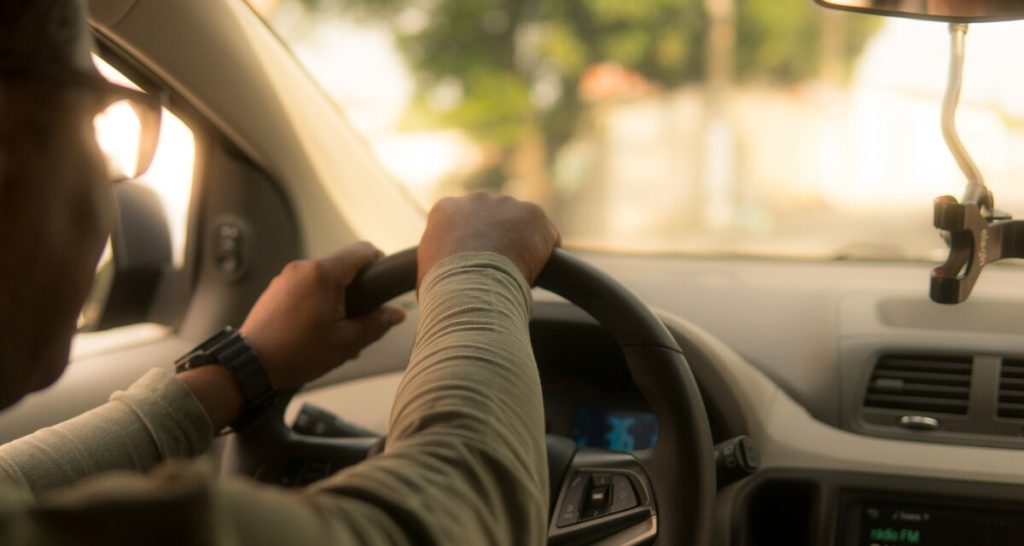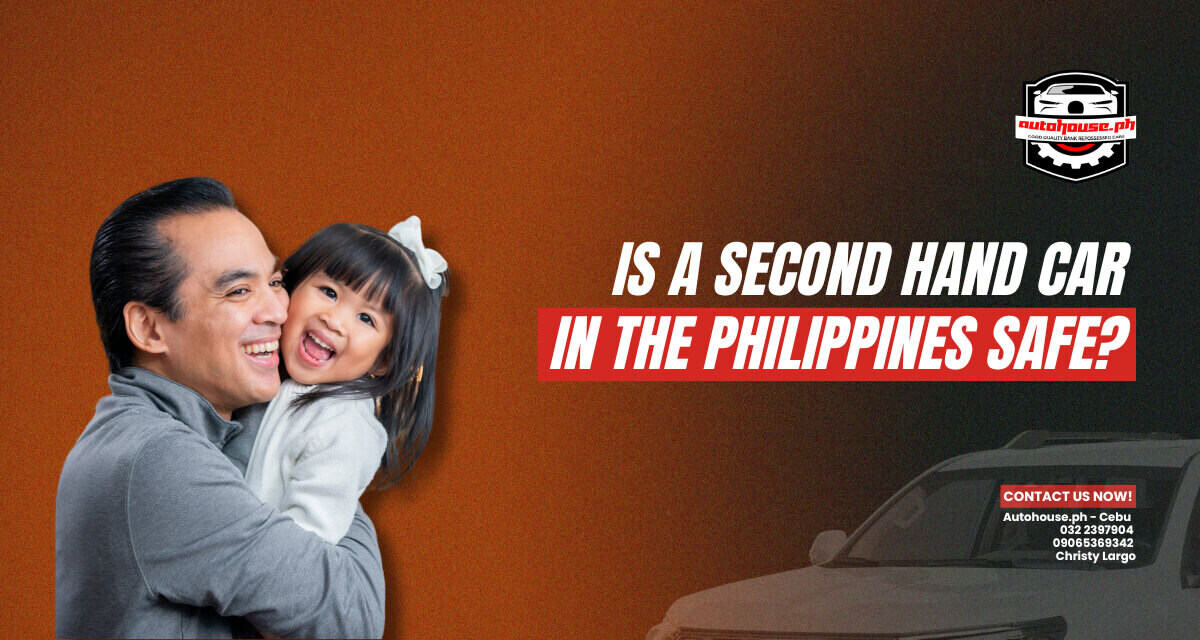BLOG
Is a Secondhand Car in the Philippines Safe?
Scams and Safety Concerns
When considering purchasing a secondhand car in the Philippines, one common concern is the potential for scams. Some sellers may try to take advantage of unsuspecting buyers, making it crucial to be vigilant and take steps to ensure your safety throughout the purchasing process.

Scam Safety Measures
To protect yourself from scams, always deal with reputable sellers and insist on thorough inspections before finalizing any transaction. Obtain a comprehensive vehicle history report to verify the car’s background, including any accidents or title issues. Additionally, make sure to meet in safe, public locations when engaging with private sellers.
Trustworthy Platforms for Buying a Used Car in the Philippines
Consider using reliable platforms like Autohouse.ph, which prioritize transparency and provide a secure environment for buying and selling secondhand cars. These platforms often have verified listings and offer additional features like certified pre-owned programs, giving you peace of mind.
Why Should I Buy a Secondhand Car in the Philippines
1. Less Depreciation
One compelling reason to opt for a secondhand car in the Philippines is the reduced depreciation. New cars often experience a significant drop in value during their initial years, whereas used cars have already undergone this stage, allowing you to maintain better value for your investment.
2. Lower Insurance Costs
Used cars generally come with lower insurance premiums, helping you save on monthly expenses and making ownership more affordable over time.
3. Lower Dealer’s Fee
When purchasing a secondhand car, you can avoid the higher dealer fees associated with buying new. This means more of your money goes into the actual value of the vehicle.
4. Wider Range of Options
Buying used opens up a broader range of options within your budget. You can explore various makes and models, potentially finding a better fit for your specific needs and preferences.
Types of Sellers in the Philippines
Private Sellers
Individuals selling their vehicles, often through online platforms or local classifieds.
Secondhand Dealers
Dealerships specializing in used cars, providing a range of options with the possibility of financing.
Certified Pre-owners
Vehicles with certified pre-owned programs, offering additional inspections and warranties for added peace of mind.
Repossessed Vehicles
Cars repossessed by banks or financial institutions, often available at lower prices.
Consider exploring options on Autohouse.ph, a reputable platform that connects buyers with trustworthy sellers, offering a variety of secondhand cars with verified histories.
Steps to Buying a Car in the Philippines
Step 1: Inspect the Vehicle
Thoroughly inspect the vehicle, including checking the mileage. Cars with a mileage of 60,000 km or higher may have more wear and tear, making them less desirable. Additionally, examine the brakes, ensuring they are in good condition.
Step 2: Check the Vehicle’s Papers
Verify the vehicle’s documentation, ensuring that everything is in order, including the Deed of Sale and the vehicle’s Official Receipt (OR) and Certificate of Registration (CR).
Step 3: Test Drive
Take the car for a test drive, checking not only its performance and handling but also the brakes. Drive through rougher and uneven roads to assess the suspension. Moreover, inspect the lights, signals, and wipers for proper functionality. Stutters or other malfunctions have to be considered when you buy your car because it may need repair soon after purchase. Finally, one of the most important checks is the mileage, which determines how much the car has driven so far. In the Philippines, 60,000 kilometers is a standard and anything above that is a car that might be a little beat up.
Step 4: Purchase the Vehicle
Consider alternative methods like buying through auctions, as discussed in [this article on purchasing a car through auction in the Philippines].
Step 5: Secure Documents and Transfer Ownership
Follow the necessary steps to secure documents for ownership transfer, including obtaining clearance from the Philippine National Police – Highway Patrol Group.
To obtain clearance from the Philippine National Police – Highway Patrol Group, you can choose to either visit Camp Crame directly or use any of the satellite stations conveniently located near the LTO offices.
Before securing this clearance certificate, make sure that you have all the necessary documents in order:
- Deed of sale with assumption of mortgage car
- Vehicle’s OR/CR
- Cancellation/Release/Assumption of Mortgage (for mortgaged vehicles)
- Secretary’s Certificate (if the vehicle was a company-owned vehicle)
- Special Power of Attorney (if the vehicle was sold through another person)
- Duly accomplished MVIR (to be done by the inspectors)
- Cir-91-137: Confirmation of CR/OR (if issued by other LTO Agency)
- Endorsement from the Insurance Company to the New Owner
- Your Taxpayer’s Identification Number (TIN)
Once all these documents are in order, proceed with securing the necessary clearance for the ownership transfer from the PNP – HPG.
Now, the next step is to initiate the transfer of ownership of your vehicle. This process needs to be completed at the LTO.
Make sure you have the following documents:
- PNP-HPG Clearance Certificate
- Original Certificate of Registration (CR)
- Latest original Official Receipt (OR)
- The Original Deed of Sale
- Appropriate insurance cover (CTPL)
- Taxpayer’s Identification Number (TIN)
- Accomplished and approved Motor Vehicle Inspection Report or MVIR
Once all these steps are completed, proceed to the nearest or preferred LTO office and head to the appropriate transaction counter.
Whether you’re buying a used car in the Philippines from private sellers, secondhand dealers, or certified pre-owned programs, ensuring the safety of the transaction and conducting thorough inspections are essential steps in acquiring a secondhand car in the Philippines.
EASTWEST BANK PRE-OWNED CARS WAREHOUSE
Cebu Warehouse
Opens every Monday to Friday - 8:00AM - 5:00PM
Bidding schedule is every Wednesday,
Cut off time is 5pm
Contact Persons :
Markevin Castro: 09391180792
JayR Yuzon: 09934951311
Norman Pahamotang: 09161204358
NICOPOLIS
Magsaysay Ext.
Kasambagan, Cebu City
Landmark: ZA English Academy / iCrazy English Academy
ORIENTAL
Zone Sikwa, S. Jayme St.
Brgy. Paknaan, Mandaue City
Landmark: Across Petron Red Gate
TINGUB
B. Suico St., Brgy. Tingub
Mandaue City
Davao Warehouse
Opens every Monday to Friday - 8:00AM - 5:00PM
Bidding schedule is every Wednesday,
Cut off time is 5pm
Contact Persons:
Niño Wanal: 09209678810
Mark Madrazo: 09186916541
DIAMOND
KM 25 National Highway, Bunawan, Davao City
Manila Warehouse
Opens every Monday to Friday - 8:00AM - 5:00PM
Bidding schedule is every Wednesday, Cut off time is 5pm
Contact Persons:
Jethro Talip: 09998867038
Frederick Tiamson: 09569228226
SANFORD
Warehouse No. 6 Sanford Compound
Km. 14 Edison Avenue, Paranaque City
MARCELO GREEN
No. 8 ACSIE Compound, West Service Road
Brgy. Marcelo Green
Bicutan, Paranque
AXIS TOWER
Filinvest Axis Tower 3, Northgate Ave.
Northgate Cyberzone, Filinvest City
Alabang, Muntinlupa City
PROMENADE
Promenade Steel Parking, Festival Mall
Filinvest Corp. City, Commerce Ave., Alabang
Muntinlupa City
ENTRATA
Level 5 and 6, Entrata Urban Complex
Spectrum Midway Extension
Muntinlupa City
THE SIGNATURE
A. Bonifacio Ave.
Balintawak, Quezon City
STA MARIA
#4 Sta. Maria Drive
Sta. Maria Industrial Estate
Bagumbayan, Taguig City
Copyright 2022 | AutohousePH

